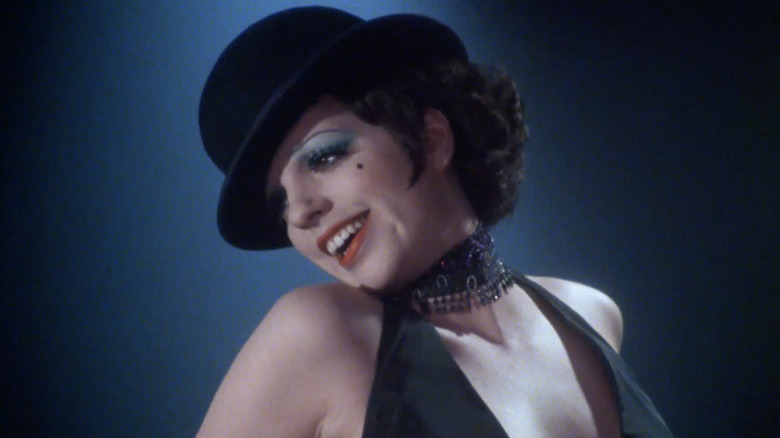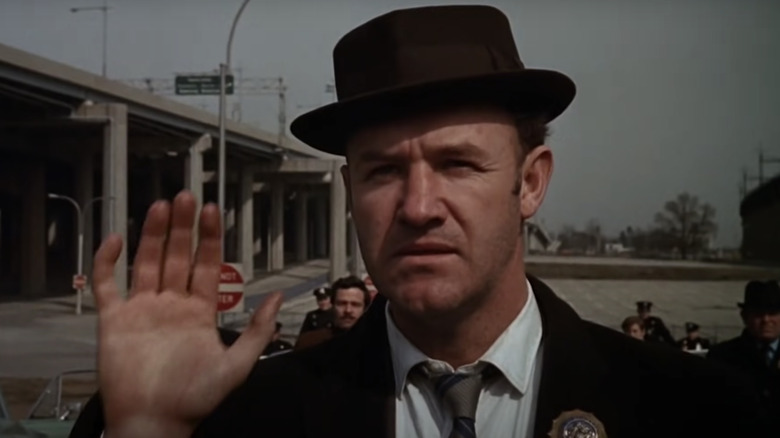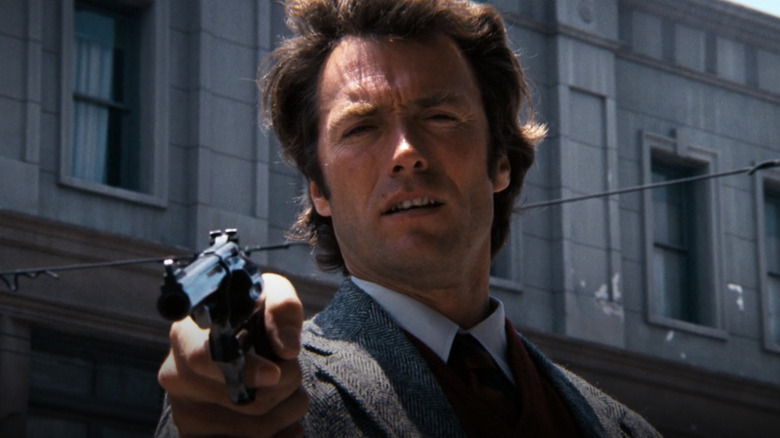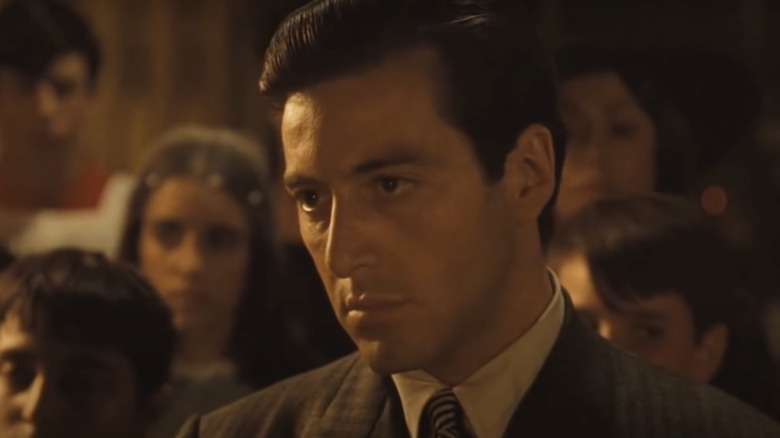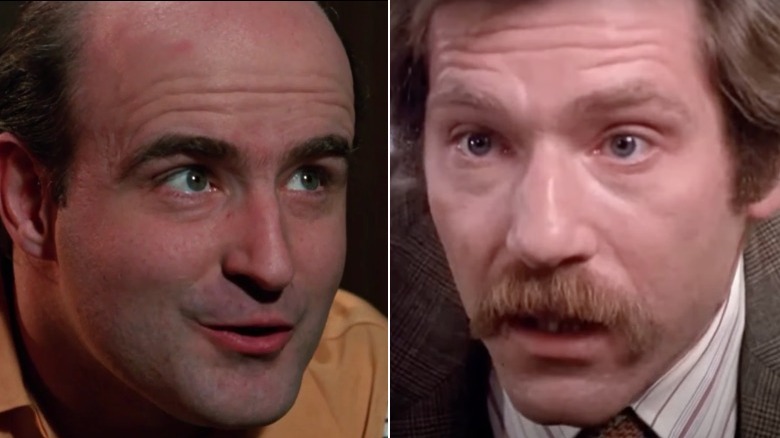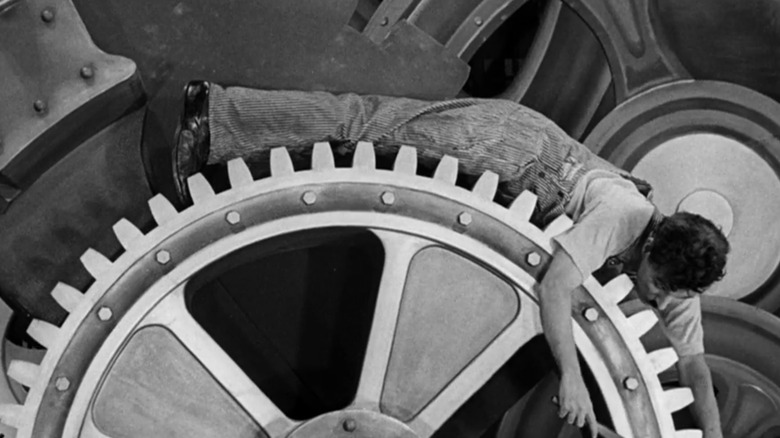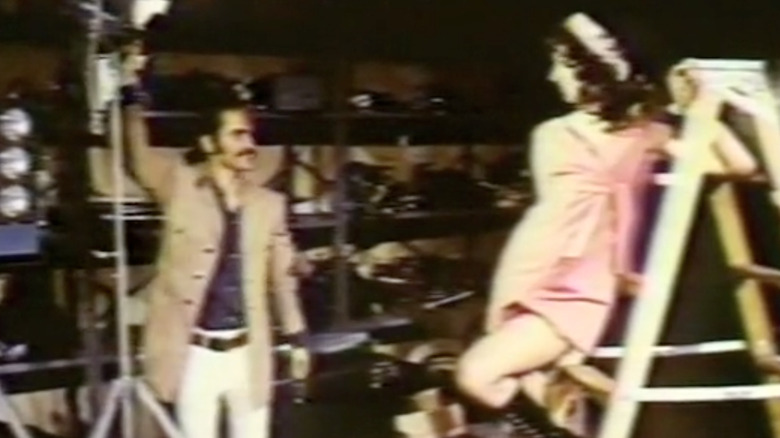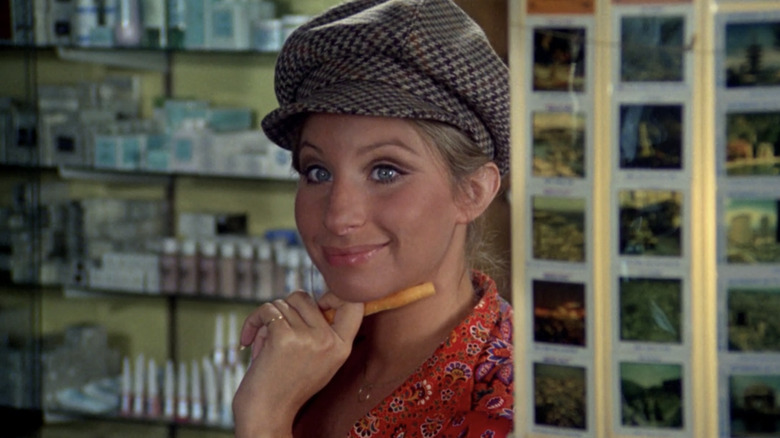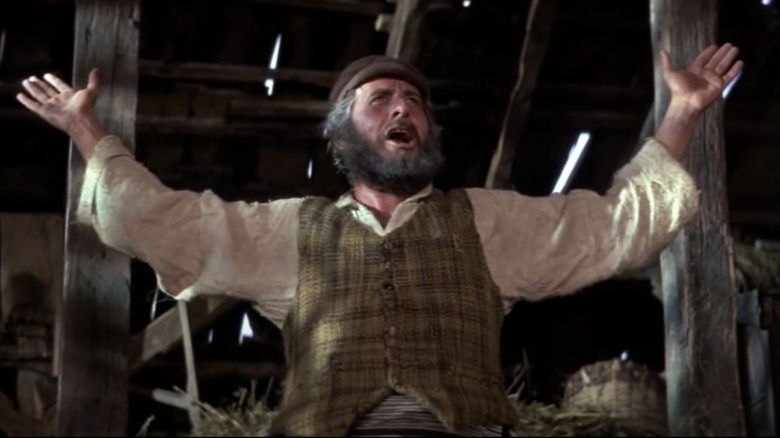On This Day: A Moviegoer On March 24, 1972
We unabashedly look at the history of pop culture through rose-tinted glasses. Longing for the past is a pastime at this point. Every new year we enter makes us wish more for what it was like in the good old days, and that yearning creates a false perception of what the past was actually like. This is extremely true of how we look back at film history. All we choose to remember about movies of a given year are the ones that stand the test of time. History has culled away the countless movies that were reviled, bombed, or just didn't grab ahold of the popular consciousness. When we think about 1939, we think of the classics like "The Wizard of Oz," "Gone with the Wind," and "Mr. Smith Goes to Washington," three movies no one would deny still hold significant value for moviegoers everywhere. However, nobody brings up movies like the Myrna Loy and Tyrone Power-led picture "The Rains Came," despite it being one of the ten highest-grossing films of that year. History has rallied around a select group of movies, and the rest we collectively forget about.
What would it actually be like to be an avid moviegoer in the past? First off, you would be at the complete mercy of what the cinemas in your area were showing. Long before the days of streaming services, Blu-ray, DVD, and even VHS, all you had was your local cinemas, which rarely had more than one screen. Instead of the seemingly infinite selection of movies new and old today, you were stuck with titles completely out of your control. Secondly, you need to remember that all the great movies held as classics today were just another movie opening at the time. Movies are hardly ever initially met with the adulation history bestows upon them. If you existed in 1959, you would be going to the theater to see "Some Like It Hot," the new comedy with Marilyn Monroe. You weren't seeing "Some Like It Hot," the greatest comedy of all time as determined by the American Film Institute. These tremendous films were shown right alongside all the other movies being released which time has forgotten, and those may have even been bigger at the time than the ones that are now classics. This is just like movies today. We have no way of knowing which films time will remember and forget.
Let's travel back through time a little bit. What films would you actually be able to see if you were sent to the past? I want to send us back exactly 50 years to the day: March 24, 1972. You are plopped in New York City on a Friday and decide to go see a movie. No loading up the Fandango app to check showtimes. Instead, you grab a copy of the day's New York Times and flip through until you find pages of movie advertisements with showtimes for theaters across every borough. Some of the titles will be familiar to you, but a lot of them will be brand new. What are you choosing to see?
The 1971 Oscar contenders
This year's Academy Awards are only a few days away, on March 27, 2022, and every film nominated for Best Picture is available at the click of a button at home. Most of them you don't even have to pay an extra cent for, depending on what streaming services you have. In 1972, the Academy Awards were still a couple weeks away, as celebrating the best in film for 1971 would take place on April 10, 1972. (The hosts that year were Sammy Davis Jr., Helen Hayes, Jack Lemmon, and Alan King, which is perhaps an even more random assortment than this year's hosts.) Getting Oscar nominations used to be a big boon for the box office, and every single film nominated for Best Picture that year are still in theaters. "The French Connection" had opened on October 7, 1971 and was still in theaters five and half months later, with this being advertised as its final weekend in theaters. After it won Best Picture that forthcoming weekend, though, it turned out not to be the end of its theatrical life. "The Last Picture Show," which also came out in October, was also in a number of theaters across the city, as were "Fiddler on the Roof," a November release and the highest-grossing film of 1971, and two December releases, "A Clockwork Orange" and "Nicholas and Alexandra."
Movies released at this time were not entirely dependent on knowing an opening weekend box office gross to know if they were successful. You used to be able to have genuine word of mouth hits that would build over time. Being put in the awards conversation also helped out the grosses, and these things allowed for lengthy runs in cinemas. Every Best Picture nominee with the exception of "Nicholas and Alexandra" was in the top ten highest-grossing films of the year. Oscar nominees beyond Best Picture were all over cinemas as well. "Sunday Bloody Sunday," "The Hospital," "Kotch," "Sometimes a Great Notion," "Who Is Harry Kellerman and Why Is He Saying Those Terrible Things About Me?", "Investigation of a Citizen Above Suspicion," "The Garden of the Finzi-Continis," "The Sorrow and the Pity," and "The Boy Friend" could all easily be seen. The nominees you would be unable to see were the ones released back in the summer or even earlier. Because movies stayed in theaters for so much longer in this era, you did not have to run out and see something the weekend it opens for fear of missing it before it left. You had months to check it out.
Other 1971 films still kicking around
The films vying for awards attention weren't the only ones enjoying many months of theatrical life. "Dirty Harry," bizarrely released on Christmas in 1971, was still taking up a ton of screens across the city. "Dirty Harry" was one of the highest-grossing films of the year, so its long run isn't too shocking — but that wasn't the only way you could see Clint Eastwood on screen. His directorial debut "Play Misty for Me," which had opened back in October, was showing as the second feature on a double bill with the Oscar-nominated "Sometimes a Great Notion."
Other 1971 holdovers ranged from the Warren Beatty and Goldie Hawn caper comedy "Dollars," to John Cassavetes' turbulent romance "Minnie and Moskowitz," to the indie romantic comedy "Made for Each Other," which was Renée Taylor and Joseph Bologna's follow up to "Lovers and Other Strangers" (amazingly still running as the second feature to "Kotch" after 19 months). For films not in the English language that were available that were not nominated for Oscars, you could also go see two recent Federico Fellini films with "Fellini Satyricon" and "The Clowns," as well as François Truffaut's "Stolen Kisses" and Claude Chabrol's "Le Boucher."
The earliest 1971 still running was "The Projectionist," a comedy starring Chuck McCann and Rodney Dangerfield, which had been out since January 17, 1971. That is an awfully long time for a movie to be in theaters, especially one that today very few people have even heard of. "The Projectionist" currently has no streaming or home video option for modern audiences to seek out, yet back then, it ran for at least 14 months. But that doesn't hold a candle to the movies released in 1970 still playing, like the indie hit "Joe" and the aforementioned "Lovers and Other Strangers." People sang "Auld Lang Syne" twice between these movie's releases and March 24, 1972. Imagine if "Promising Young Woman" were still in theaters today. That would be an extraordinary feat.
1972 started off incredibly well
The beginning of 1972 started off incredibly well for movie watchers. Remarkably, three bonafide classics were released before March had even ended. Maybe you've heard of them. Those three movies are "The Godfather," "Cabaret," and "What's Up, Doc?" That is quite a flex from early 1972. But you have to remember, the studios did not know these films would become landmark achievements. If they thought they were particularly special, chances are pretty strong they would not have been released in March. Instead, they would have mirrored the release strategy of nearly ever Oscar success and come out in the fall and winter, like all the 1971 holdovers you could still see on this day.
Alongside those three juggernauts was a smattering of every kind of movie you could think of. The most high profile of the pack was probably George Roy Hill's adaptation of "Slaughterhouse-Five." For fans of British cinema, you had Stephen Frears' directorial debut "Gumshoe," starring Albert Finney, as well as the Michael Caine-starring "X Y & Zee" (aka "Zee and Co."). For a slick, movie star-driven heist movie, you had "The Hot Rock," starring Robert Redford and George Segal. For those of you looking for some scares, you had the Marlon Brando-led "The Nightcomers" and the horror anthology film "Tales from the Crypt." For those interested in documentaries, there was "Russia" and "The Concert for Bangladesh." You even had Maya Angelou's screenwriting debut "Georgia, Georgia," for which she also composed the score.
We also cannot forget the selection of low-budget fare that wanted to stir up some discourse. There is "I Want What I Want," an early film about a transgender woman. Sean S. Cunningham gave us an early role for adult film star Marilyn Chambers (pre-"Behind the Green Door") with the low-budget sexploitation film "Together." Plus, there was the Six Day War film "The Jerusalem File."
The era of the double bill
For decades, theatrical moviegoing was not simply about watching a movie. No, moviegoing was an event. There would be newsreels, cartoons, serials, and even a second feature film when you would head out to a screening. By 1972, a lot of that had fallen away, as television had taken a stronger hold in the pop culture sphere. Double features, however, were still fairly common. So, if you were going to go see Peter Boyle in the film "Joe," that was not the only movie you would be seeing. You would also see the Carl Reiner comedy "Where's Poppa?" as well.
Sometimes the pairing would be from the same studio. For instance, "Kotch" and "Lovers and Other Strangers," which showed on a double bill together, were both distributed by the Cinerama Releasing Corporation. The same goes for MGM pairing "The Jerusalem File" with the Michael Caine crime classic "Get Carter." Other times, theaters would just pair two films together that they felt their audience would want to see. That's why François Truffaut's "Stolen Kisses" was accompanied by Andy Warhol's "Trash," or "Investigation of an Unknown Citizen" was with Éric Rohmer's superb "Claire's Knee." All appealed to the art house crowd, even though they didn't have the same distributors. Then there are the times where they would pull a film out of the vault to pair specifically with what they were showing, which is how "Fellini Satyricon" shares a double feature with "8 1/2."
Double features were an invaluable part of film watching for avid cinema lovers. They allowed you to get more bang for your buck and exposed people to movies they may not have known they would enjoy if they came specifically just for one of the movies. You may still find a local arthouse that will still do double features, but the practice is basically extinct, which is such a shame.
You needed re-releases to see a movie again
Since home video was not around in 1972, the only way you could see an older film was for it to get a theatrical re-release. Thankfully, sitting around and hoping for a theater to show something you have been dying to see for years is no longer an issue. But on March 24, 1972, there was quite an interesting range of catalogue titles to choose from. If you wanted to really dig back into film history, you could go see D.W. Griffith's "Intolerance." If that's not problematic enough for you, the option existed to go check out "Song of the South," the notorious film Disney refuses to put out on home video.
Thankfully, not all of the re-releases were quite so collar-yanking. There were several undisputed classics getting a new life on the big screen. For some hearty chuckles, Charles Chaplin's phenomenal indictment of Great Depression-era capitalism "Modern Times" was playing. You could embrace the one-two punch of admiring the work of Japanese masters Akira Kurosawa and Yasujirō Ozu by seeing "Seven Samurai" and "Tokyo Story." And revival cinema isn't revival cinema without some horror movies, and there was a doozy that day. You could enjoy a double feature of the classic Universal monster movies "Dracula" and "Frankenstein," which would be accompanied by three "Scream Stories."
That's a good number of older films to choose from if you wanted to brush up on your film history. It is a shame that if you do not have a local revival house nearby, you essentially have to wait for the occasional Fathom Events re-release of a movie to see an older film in theaters. While the convenience of access at home is a wonderful thing (and was a necessary way to remain tapped into movie culture during the earliest days of the pandemic), there is over a century of cinema designed for the big screen that's rarely afforded the opportunity to be displayed in its proper form for future generations.
The adult film boom
Look, it would not be early 1970s moviegoing if adult films were not a part of the discussion. If you wanted to watch some porn, you had to go to a theater to do it, and porn saw quite the rise in popularity in the '70s. 1972, in particular, saw the release of "Deep Throat," which was the seventh highest-grossing film of the year. That film came out in June of 1972, so it isn't quite yet available in our time-travel scenario. However, adult films were still playing, and the advertisements for them were mixed right alongside the non-adult films in the newspaper.
One of the top porn producers of the era, Bill Osco, had two films out at that time: "The Sex Wish" and "Seeds of Love." Paul Glickler, director of "The Cheerleaders" the following year, had the film "Hot Circuit." About half of the adult films playing at this time tailored to a gay male audience, such as "Boys in the Sand," "Swap Meet," and a double feature of "Four Letters" and "The David." If you were transported to March 24, 1972, you certainly would have no trouble finding a blue movie, as long as you were over 21 years old.
The allure of the single screen
Crucially, I think 1972 shows us the importance of single screen cinemas. Because multiplexes did not really exist, each film from this gigantic list of movies was playing at its own, individual cinema. The marquee would be covered in promotional material for that one specific movie. At that time, there were dozens upon dozens of theaters all over New York City, and the vast majority of them have since shuttered, either taken over by office buildings and shops or demolished entirely. Single screen movie theaters, in their own little way, truly made the movie you were about to see an event. The entire building you were walking into was in service of showing one movie (or sometimes two, if it was a double bill). You could walk down the street and see buildings dedicated to a bunch of different films. Now, only one single screen cinema exists in New York City: The Paris Theater (now operated by Netflix). That level of focus on one picture is now entirely gone. If you are going to see a movie in a multiplex or on streaming, any movie you watch will be sandwiched between multiple other movies. It feels more like an icon on a screen at that point, rather than something unique you are about to experience.
Single screen theaters also encourage a diversification of the kind of films being made. One might think a multiplex would do this, as you have six, ten, or twenty different screens in one place to show various movies. That may have been true at their inception, but now the multiplexes are increasingly being filled with the same kind of movies, where each one just has a different color spandex suit in it. If you wanted to go see a romantic comedy, you would go to one theater. If you wanted to see an action film, you would go to another. Each theater needed something of its own to stay alive, and if you were just showing a slight variation of something at another theater, you would not be able to carve out your own identity as a theater.
But March 24, 1972 also shows the importance of variety. Look back on all the titles I have mentioned in this piece. Any mood you are in could be accommodated by one of the dozens of films available to you. This day had an unusually high amount of classics, but even if they were just simply decent pictures, the genres, tones, and styles vary wildly among them. Open up your Fandango or other cinema app and see how many straight up comedies are available to go see in a theater right now. At my local theater, there isn't a single one. Essentially, there are action and horror movies. That's it. Streaming admittedly opens up the playing field, but it is so easy to scroll past so many of those films without a second thought. In 1972, the playing field for different genres was pretty even. Now, a few types of movies "deserve" a big screen, and the others don't.
The choice is yours
While this day did have its share of classics, chances are strong you haven't seen the majority of the films I have mentioned here. Most of them were not monumental blockbusters. Some of them are not very good. The biggest difference between then and now when it comes to moviegoing is we used to give films a chance. Having a movie run for months on end let the movie find its audience. If a movie comes out today and doesn't do too hot at the box office opening weekend, the movie is basically dead, even if it was tremendous. History will have to be the one to reclaim it later on down the line. Word of mouth means very little. It's anticipation, release, and then moving onto the next thing. If 1972 shows us anything, it's that we need to sit with movies for much longer than we currently do. Let's ruminate on them. See them again if we feel compelled. Movies require the efforts of so many people, and giving them more than a cursory consideration would do wonders to how we discuss films.
Of course, I am romanticizing the past again. People didn't walk into every movie theater in the '70s in awe of a place dedicated to cinema. This was just where you saw movies. Now, people watch them on their laptops. I do think variety of films and not immediately moving onto the next thing are important, but what this exercise shows us is that both eras, in their own ways, were filled with people spoiled for choice. Our choices now may be on a wider spectrum, but people still sat around and suggested movies to watch back and forth until they agreed on something. In 1972, they didn't know how great some of those choices were yet, and 50 years from now, there are going to be some legendary classics we didn't spot in our midst today. As someone who loves going to a cinema, I naturally long for the time where appreciating and talking about movies — whether brand new, or many months or even years old — was at the center of popular culture.
